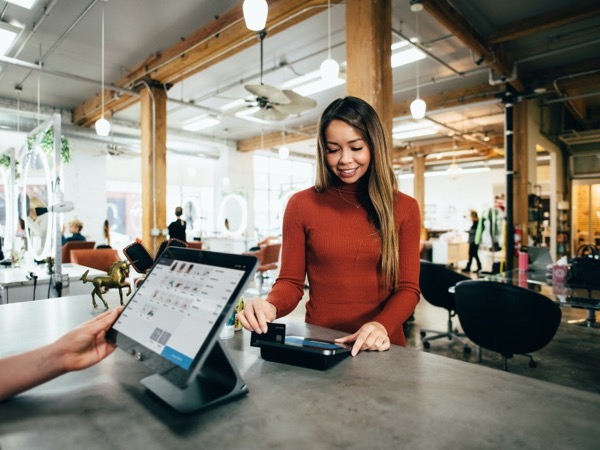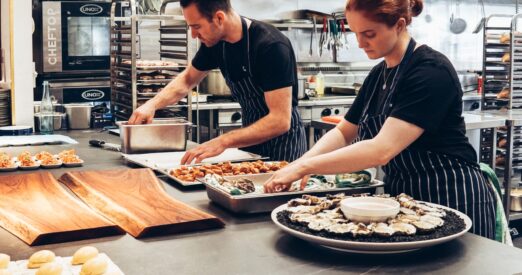
How Food Invoice Data Reveals Savings for Restaurant Operators
by The Ottimate Editorial Team
For restaurant operators, controlling food invoice cost is more important than ever.
The restaurant industry has already been facing rising labor costs, fluctuations in the real estate market, and now — new disruptions in the supply chain that are leading to price increases for a wide range of ingredients.
To help navigate these murky waters, operators are turning to restaurant tech tools that can help provide guidance. However, it’s one thing to have data — it’s another challenge to do something with it.
Here, we’ll examine one of the frequently-overlooked treasure troves of data available to your restaurant: information from your vendor invoices.
The data in your invoices can provide valuable, actionable insights that can be used to help control food costs. If you can leverage this data, which is generated as part of your invoice automation processes, you can help optimize your food costs and ultimately improve restaurant profitability.

Digitizing Food Invoices to Leverage Procurement Data
Automating the accounts payable (AP) process provides a whole host of benefits directly for restaurant operations.
First, AP automation removes the challenges of manually processing paper invoices. Paper invoices can be easily lost or forgotten in the day-to-day business of running a restaurant. Even if invoices are properly received, manually inputting invoice information into an accounting system can be time-consuming and prone to hand-entry errors.
An invoice processing tool like Ottimate can help restaurants track, route, and reconcile a high volume of detailed and complex invoices. AP automation streamlines the invoice process and removes many of the common pain points. Invoices are transcribed into files, the correct General Ledger (GL) code is automatically applied to each individual line item, and invoice information becomes searchable.
Digitized invoice data offers operational efficiencies by streamlining accounting and bookkeeping processes and helping ensure more accurate, reliable data. However, the benefits of AP automation don’t stop with operational efficiencies.
Your invoices don’t just represent the bills you need to pay. These invoices also contain a wealth of data about procurement. With the right AP automation tools, restaurant operators can move beyond just collecting data and instead apply data-fueled insights to operations.
When you digitize your invoice data, it becomes searchable and time stamped. Accessing the data stored in your invoices provides you with unique, actionable insights into your food cost—and, perhaps even more importantly, allows you to compare that data across different contexts.
Insights Hidden in Your Food Invoice Data
At Ottimate, we’ve seen how restaurants can use this invoice data firsthand. By pulling Ottimate data from automated invoice and bill payments for over 13,000 customers across the hospitality industry, our platform offers a unique window into price data.
Searchable invoice data allows you to compare food costs across time, locations, and distributors. When applied strategically, invoice data can help you predict and control food costs in your restaurant.
With your invoice data in hand, what are some of the specific questions you can examine? Let’s dive into some examples.
Have Ingredient Prices Gone up Over Time on Your Food Invoice?
Your AP automation tool is already tracking the price of every item. When you are able to compare these prices over time, longitudinally, trends that aren’t obvious day-to-day can become more prominent.
Examining food price increases over time can inform your overall menu development. If the cost of certain ingredients has continued to grow over a long period, without showing signs of stabilizing, that data can inform how your restaurant uses that menu ingredient in the future.
In addition, examining price trends over time can also help you spot price spikes that call for more urgent action, reacting strategically if there is a sudden increase. This is especially critical for your more expensive items, such as proteins like meat and fish.
For example, if the price of a certain fish like tuna spikes, how will your restaurant react? If your menu is flexible enough to make changes, like switching out tuna for another seafood temporarily, you can use this invoice data to decide when to make the change.
Whether you decide to limit the quantities you order, or stop ordering an item altogether, your invoice data can help arm you for negotiations with your vendor. Using Ottimate accessing food cost graphs and dashboards can help you show your vendors how the ingredient cost has changed over time, giving you exactly the data you need to make your case.
Do Vendor Prices Vary Across Your Locations?
For multi-unit restaurant groups, comparing invoice data across stores can reveal useful price trends. If your locations are purchasing similar ingredients, you have the opportunity to easily compare overall pricing structures, as well as pricing per unit.
Frequently, invoice data is siloed between locations. Say two locations both order 40 pounds of onions a week. However, with inter-store invoice data, you notice that one location pays a higher price per unit. Upon a closer look, you can see that one store is ordering in 20 pound bags, and another is ordering in 10 pound bags. With this data in hand, you can ensure both stores are choosing the optimal pricing option.
If prices do vary across locations, even with the same unit pack size, you should be able to leverage this insight in talking with your vendors. Are there reasons for the discrepancy? Can you use it as an opportunity to revisit prices, or even negotiate for volume discounts across stores?
Making this data accessible between stores is one of the easiest ways to audit the consistency of vendor prices and find any possible opportunities for food cost savings.
Is Your Vendor Charging Too Much?
In order to keep food costs low, it’s in your best interest to find the best possible ingredient prices with vendors. Auditing how much you’re paying for restaurant food, beverage, and supplies should be a regular exercise.
Accessible invoice data allows you to search by product across different vendors, unlocking these insights. Is one vendor selling a given food item for way more than another one?
With automated data collection and compilation, you can easily compare prices between vendors and spot where you may have an opportunity to either renegotiate prices or switch vendors.
Are Vendors Violating Agreed Upon Contract Prices You Set?
Reviewing and enforcing contract pricing is necessary for optimized food costs. However, enforcing contract pricing over time can be incredibly time-consuming. Restaurants receive numerous invoices from different vendors, multiple times a week. It can take a lot of time to properly process invoices, let alone review invoices and cross-reference your contracts.
However, by using an AP solution, you can automate guard rails on pricing. AP automation and invoice data can help you ensure that the prices you’ve already locked-in through vendor contracts are always applied.
Your invoice automation tool should enable you to plug in the parameters of contracted pricing and set up actionable triggers that flag any price changes outside the agreed-upon range. With this tool helping you audit vendor pricing, you can catch any issues quickly before they add up to higher food costs over time.
Food Invoice: Are There Cost Savings Opportunities?

Finally, invoice data can offer a glimpse into savings opportunities that may not be obvious just from scanning invoices or reading industry news.
For example, as documented in Ottimate’s recent ebook “How to Use Invoice Automation to Improve Restaurant Profitability,” taking a close look at sugar invoice data uncovered a beneficial cost-saving opportunity.
Pack size of bulk goods typically plays a large role in price volatility. However, because many operators can’t access granular invoice data across time or locations, they cannot see this trend in the economics of pack size.
Through aggregated invoice data, an Ottimate analysis found that per pound of sugar, the smallest packages of both granulated and brown sugar were cheaper this year than their mid-bulk counterparts.
This had a real-world explanation: Brazil, one of the world’s largest producers of sugar, experienced a historic cold snap in August 2021. This event caused the price of sugar to spike, which in turn introduced anomalies into pack size pricing. The news item can be seen visibly in the sugar prices that Ottimate pulled out of invoice data.
With searchable invoice data, you can track volume-normalized purchase data for a specific inventory item. When you are able to compare this data across time, locations, vendors, and even across pack sizes, you can discover new savings opportunities buried deep in invoice data.
Conclusion
The efficiencies that you add into your invoice approval and payment process don’t just benefit your operations. These software tools can fuel industry-competitive insights that you can use to control food costs, playing a new role in your restaurant’s success.
Ottimate is hospitality’s leading provider of invoice automation, bill pay, and expense management. Ottimate was specifically developed to meet the needs of the restaurant industry. Originally founded as an invoice automation system, our features have expanded to include VendorPay and even our own corporate card. Now our software can automate the entire AP workflow, from invoice digitization and coding, approvals, reconciliation, and even bill pay.
Interested in learning more about how invoice data can be applied to optimize your food costs? Request a demo today!
Stay up to date on the latest news in AP automation and finance
Related

